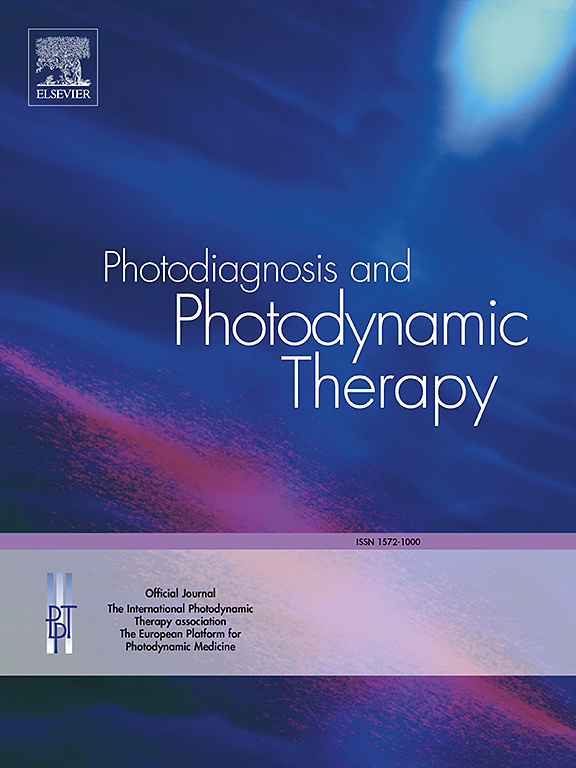光动力治疗对大脑影响的分子机制:文献综述。
IF 3.1
3区 医学
Q2 ONCOLOGY
引用次数: 0
摘要
恶性胶质瘤是成人最常见的原发性脑肿瘤。这些肿瘤有多种分子来源,预后很差。世卫组织IV级胶质瘤缺乏有效的治疗方法,所有胶质母细胞瘤都进展或复发。目前的治疗方法包括手术干预、放射治疗和化疗都是不够的,而且会对健康的脑组织造成损害和神经功能障碍。在治疗干预期间,由于恶性胶质瘤能够弥漫性浸润周围脑实质,使健康脑组织的保存变得极其困难。光动力疗法(PDT)是一种可能克服传统治疗方法固有缺陷的胶质瘤治疗方式。光动力疗法包括使用光敏剂(PS),在光敏组织吸收光后,引发光化学反应,产生活性氧(ROS),导致肿瘤细胞死亡。专注于有效使用PDT治疗胶质瘤的研究已经在进行中,并取得了令人鼓舞的结果。PDT治疗胶质瘤的临床研究表明,它是一种安全的治疗方式,副作用水平可接受。然而,在这些肿瘤的PDT过程中观察到一些不良的后遗症,如光敏性增加,颅内压升高或一过性失语和原有神经功能障碍的恶化。尽管PDT的临床后遗症已经得到了很好的描述,但PDT对健康大脑的影响的分子机制尚未得到彻底的表征。在本文中,我们试图总结光敏对神经组织、脑血管系统和血脑屏障(BBB)影响的分子机制。我们还指出了提出分子方法来保护健康的大脑免受光动力损伤的不利影响的发现。本文章由计算机程序翻译,如有差异,请以英文原文为准。
Molecular mechanisms of the effects of photodynamic therapy on the brain: A review of the literature
Malignant gliomas are the most common primary brain tumors in adults. These tumors have a diverse molecular origin and a very poor prognosis. There is a lack of effective treatment at WHO grade IV glioma, and all glioblastomas progress or recur. Current treatments including surgical intervention, radiation therapy, and chemotherapy are insufficient and can cause damage to healthy brain tissue and neurological deficits. The preservation of healthy brain tissue during therapeutic intervention is made extremely difficult by the ability of malignant gliomas to diffusely infiltrate the surrounding brain parenchyma. Photodynamic therapy (PDT) is a treatment modality for glioma that can possibly overcome the inherent shortcommings of traditional therapies. Photodynamic therapy involves the use of a photosensitizer (PS) which, upon absorption of light by photosensitized tissue, triggers photochemical reactions generating reactive oxygen species (ROS) leading to the killing of tumor cells. Research focusing on the effective use of PDT in the treatment of glioma is already underway with promising results. Clinical studies on PDT for the treatment of gliomas have shown it to be a safe therapeutic modality with acceptable levels of side effects. However, some adverse sequelae have been observed during PDT of these tumours, such as increased photosensitivity, increased intracranial pressure or transient aphasia and worsening of pre-existing neurological deficits. Although the clinical sequelae of PDT are well described, the molecular mechanisms of PDT's effects on the healthy brain have not yet been thoroughly characterized. In our work, we attempt to summarize the molecular mechanisms of the effects of photosensitization on neural tissue, brain vasculature and the blood-brain barrier (BBB). We also point to findings presenting molecular approaches to protect the healthy brain from the adverse effects of photodynamic damage.
求助全文
通过发布文献求助,成功后即可免费获取论文全文。
去求助
来源期刊

Photodiagnosis and Photodynamic Therapy
ONCOLOGY-
CiteScore
5.80
自引率
24.20%
发文量
509
审稿时长
50 days
期刊介绍:
Photodiagnosis and Photodynamic Therapy is an international journal for the dissemination of scientific knowledge and clinical developments of Photodiagnosis and Photodynamic Therapy in all medical specialties. The journal publishes original articles, review articles, case presentations, "how-to-do-it" articles, Letters to the Editor, short communications and relevant images with short descriptions. All submitted material is subject to a strict peer-review process.
 求助内容:
求助内容: 应助结果提醒方式:
应助结果提醒方式:


